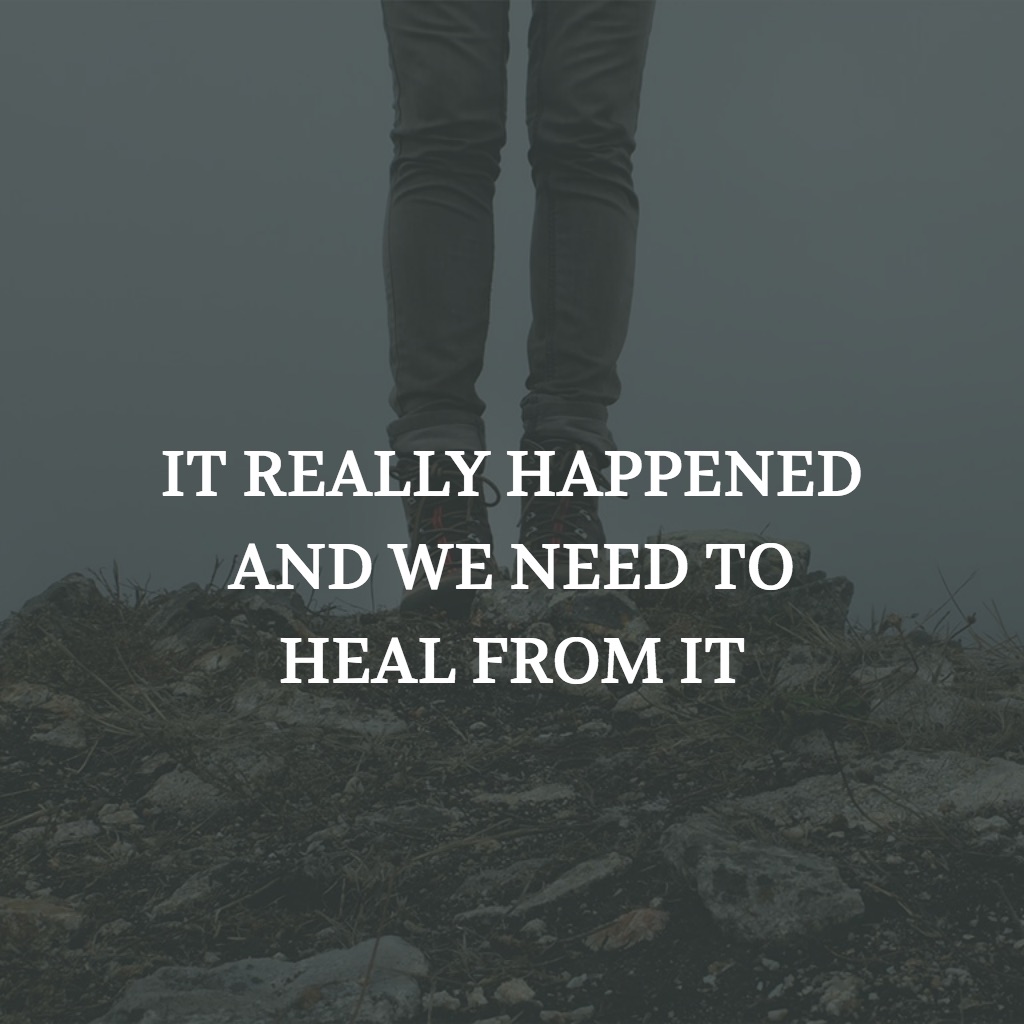Yesterday’s testimony by Dr. Blasey Ford and Judge Brett Kavanaugh was a super storm that destroyed the shoreline of every trauma survivor. It tore through any protections any survivor had covering the old wounds. It destroyed any magical thinking that the powerful would protect the assaulted—especially if the assaulted were women.
Because of the Kavanaugh accusations I have witnessed days of testimony on my social media feeds of woman after woman recounting her story of sexual assault. The sheer numbers are staggering and each new voice seems to embolden someone else to share their story. We are witnessing a moment where survivors seem to finally feel that they will be believed and that their story matters. We need to listen to them, we need to listen to ourselves. We need to be able to hold the truth: it really happened.
This shift from burying an old story or hiding an old story or discounting an old story to the radical act of owning your own story has a shattering effect on your present. All the structures you were using to hold yourself together are busted up. I picture the newspaper photo of the woman standing in a sea of wreckage after the Moore tornado in Oklahoma a few years ago. She was safe and whole, and yet nothing was where it once was. She kept herself safe in her little protective cocoon during the storm, but now has to see all the damage that was done while she was in there.
This time when the protections get torn away, and the damage is visible is a very important and precious stage in healing from trauma. This is what I call the ‘unintegration’ stage—where things have come apart enough to get at the old wounds—to see what happened and how you protected yourself all these years. You can’t heal without this stage, but this stage and its raw pain is not the end of healing. Unintegration is necessary because the old wounds get protected and we can’t see how much we have organized our selves and our lives to keep us from ever experiencing the trauma again. But telling our story and truth is just the beginning, it is not the end of healing.
The myth of trauma is that we can heal it entirely through testimony—that the story of ‘what happened’ is enough to heal us. We praise people who come forward and write and tell their stories of trauma—and yet we never really hear the stories that come after the testimony of trauma—the stories of what it takes to heal.
The problem is that most trauma is not just a single entity: Most trauma is really three forms of trauma. The first form of trauma is ‘what happened’ – the trauma you remember, the testimony we are hearing right now. This is what most people think of as the trauma. But trauma is much bigger than that. The second form of trauma are the protections you used to survive the trauma—the ways you changed yourself—your personality, your beliefs, your behavior-- to protect yourself from ever feeling that helpless, afraid or ashamed again. These protections helped you survive, but they often also rob you of the life you want, the relationships that could sustain you, the joy in life that may be around you but you can’t take in. And the last form of trauma is the most invisible: it is what didn’t happen. It is the growth, development, experiences that didn’t happen while the trauma and aftermath were occurring. It is what was missed. It is what wasn’t learned.
The reason our culture is so bad at healing trauma is that we stop with the first form of trauma—we stop with the story and the testimony. And we need to help people stay in the healing process long enough to really look at the protections they used to survive and really begin to sort what didn’t happen and begin to bring some of those experiences into their lives.
So yes, to all of you survivors out there. It did happen. You can say it out loud and we will believe you. And yes, when you say it and feel it, it will feel like the wreckage of your strong defenses are laying all around you. Unintegration is hard, but it is important. It allows you to see what was hurt. It allows you to see that you are still standing despite that. It allows you to begin to rebuild from a new place.
And to all survivors I say this: No one heals alone. If you are telling your story for the first time or the fiftieth time I encourage you to find a healing relationship. Most trauma is relational trauma, and relational trauma needs to be healed in relationship. I want you to not just tell your story, I want you to heal from the trauma. I want you to heal because you will get to live in your life and your relationships in a bigger and more joyful way. But selfishly I also want you to heal from trauma because the power of healing reaches way beyond you—you can inspire and support and stand firm in the world in ways you can’t imagine and we desperately need. It did happen, and we all need to heal from it.
For more information about how to find a therapist click here or use the Psychology Today website.
For more on healing from trauma, check out my book: Journey Through Trauma
